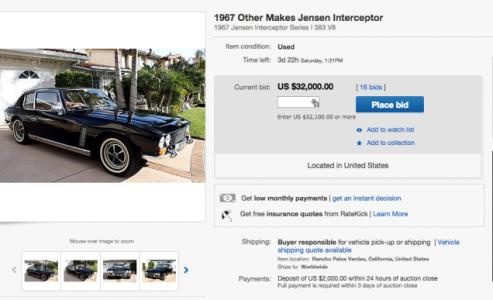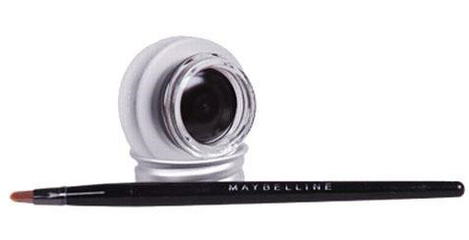A
试题分析:句意:我认为对于我二十分钟内完成这项工作真是艰难的工作。不定冠词表示某一类人或某事物中的任何一个,经常用在第一次提到某人或某物时,用不定冠词起介绍作用,表示一个。定冠词特指某(些)人或某(些)事物, 以区别于同类中其他的人或事物。不用冠词的情况:专有名词前,物质名词和抽象名词前,表示一类人或事物的复数前,三餐球类棋类前。work 抽象名词,不可数,故不填。选A.
考点:
考点名称:不定冠词(a,an)不定冠词:定冠词,英语虚词冠词的一种,冠词是虚词,本身不能单独使用,也没有词义,它用在名词的前面,帮助指明名词的含义。
英语中的冠词有三种,一种是定冠词,另一种是不定冠词,还有一种是零冠词。
不定冠词a(an)与数词one同源,是"一个"的意思。a用于辅音音素前,一般读作e,而an则用于元音音素前,一般读做en。不定冠词基本用法:
不定冠词主要用在可数名词单数前,表示:
1.“一个”
She is a friend of mine.她是我的一位朋友。
可用在表示数量的词组中:four times a day, half a kilo
2. “某一个”
A car is waiting at the gate.有一辆车在门口等你。
3. 某类人或物(可用在表语、同位语中):
She is a Canadian (dancer.)她是加拿大人(舞蹈演员)。
4. 某类人或物(可作主语,表示整个这类人或东西):
A child needs love.孩子需要爱。
定冠词和不定冠词的区别:
一、不定冠词表示泛指,定冠词表示特指。
不定冠词a (an)与数词one 同源,是"一个"的意思。a用于辅音音素前,一般读作[e],而an则用于元音音素前,一般读做[en]。
1、表示"一个",意为one;指某人或某物,意为a certain。如:
A Mr. Ling is waiting for you.
2、 代表一类人或物 如:
A knife is a tool for cutting with.
Mr. Smith is an engineer.
二、定冠词the与指示代词this,that同源,有"那(这)个"的意思,但较弱,可以和一个名词连用,来表示某个或某些特定的人或东西。
定冠词的用法:
1、特指双方都明白的人或物:
Take the medicine. 把药吃了。
2、上文提到过的人或事:
He bought a house. I've been to the house. 他买了幢房子。我去过那幢房子。
3、指世上独一物二的事物:
the sun, the sky, the moon, the earth
4、单数名词连用表示一类事物,如:the dollar 美元; the fox 狐狸;
或与形容词或分词连用,表示一类人:the rich 富人; the living 生者。
5、用在序数词和形容词最高级,及形容词only, very, same等前面:
Where do you live? I live on the second floor. 你住在哪?我住在二层。
That's the very thing I've been looking for. 那正是我要找的东西。
6、与复数名词连用,指整个群体:
They are the teachers of this school.指全体教师)
They are teachers of this school. (指部分教师)
7、表示所有,相当于物主代词,用在表示身体部位的名词前:
She caught me by the arm.. 她抓住了我的手臂。
8、用在某些由普通名词构成的国家名称、机关团体、阶级、等专有名词前:
the People's Republic of China 中华人民共和国
the United States 美国
9、用在表示乐器的名词之前: She plays the piano. 她会弹钢琴。
10、用在姓氏的复数名词之前,表示一家人:
the Greens 格林一家人 (或格林夫妇)
11、用在惯用语中:
in the day, in the morning (afternoon,evening), the day after tomorrow
the day before yesterday, the next morning,
in the sky (water,field,country)
in the dark, in the rain, in the distance,
in the middle (of), in the end,
on the whole, by the way, go to the theatre
冠词口诀:
冠词分为定冠、不定冠,
不定冠词a和an,“—”的含义表泛指
表示特指要用the,次序、方位、最高级
世上物体独一个,人或事物再次提
以下情况冠词免,学科球类三顿饭
名词复数表泛指,季节星期月份前
不定冠词位置:
不定冠词常位于名词或名词修饰语前。注意:
a. 位于下列形容词之后: such,what,many,half,
I have never seen such an animal.
Many a man is fit for the job.
b. 当名词前的形容词被副词as, so, too, how, however, enough修饰时,不定冠词应放在形容词之后:
It is as pleasant a day as I have ever spent.
So short a time.
Too long a distance.
c. quite,rather与单数名词连用,冠词放在其后。
但当rather,quite 前仍有形容词,不定冠词放其前后均可。如:quite a lot
d. 在as,though 引导的让步状语从句中,当标语为形容词修饰的名词时,不定冠词放形容词后:
Brave a man though he is,he trembles at the sight of snakes. 他尽管勇敢,可见到蛇还是发抖。
当名词被比较级形容词修饰时,不定冠词通常置于比较级形容词之后。
定冠词通常位于名词或名词修饰语前,但放在all, both,double,half,twice,three times等词之后,名词之前。
All the students in the class went out. 班里的所有学生都出去了。
定冠词:
具有确定的意思,用以特指人或事物,表示名词所指的人或事物是同类中的特定的一个,以别于同类中其他的人或事物,或用在世界上“独一无二”的事物的名词前,相当于汉语中的“那个” 或“这个”的意思。它可以和单、复数名词,也可以和不可数的名词连用。
例如:The panda is one of the animals most in danger.
Italy is in the south of Europe.
The earth goes round the sun. .
基本用法:
1). 用以特指某(些)人或某(些)事物
This is the house where Luxun once lived.
这是鲁迅曾经住过的房子。
2). 用于指谈话双方都明确所指的人或事物
Open the door, please.
请把门打开。
3). 用以复述上文提过的人或事物(第一次提到用“a或an”,以后再次提到用“the”)
Once there lived a lion in the forest. Every day the lion asked small animals to
look for food for him.
从前森林里住着一只狮子。每天这只狮子要小动物们为他寻找食物。
4). 用在序数词和形容词和最高级前
January is the first month of the year.
一月份是一年当中的第一个月。
5). 表示世界上宇宙中独一无二的事物
the sun 太阳 the moon 月亮
6). 指由普通名词构成的专有名词
the West Lake 西湖 the Great Wall 长城
7). 表示方向、方位
in the east 在东方 in the west 在西方
8). 在海洋、江河、湖泊、山脉、海峡、海湾等地理名词前
the Pacific Ocean 太平洋 the Yellow River 黄河
9). 在姓氏复数前,表示一家人
The Bakers came to see me yesterday.
贝克一家人昨天来看我。
10). 和某些形容词连用,使形容词名词化,代表一类人或物
the poor 穷人 the rich 富人
11). 表示演奏乐器时,乐器的前面要加the
play the piano 弹钢琴
play the violin 拉小提琴
[中国乐器名词前不与冠词连用:play erhu(二胡)]
12).某些固定的表达法
in the morning 在早上 in the afternoon 在下午
in the evening 在晚上 go to the cinema 去看电影
关于定冠词The 的用法 :
1 表示特指的人或物
例:Please hand me the key on the desk. 请把桌上的钥匙递给我。
The girl in red is his sister. 穿红色衣服的女孩是他妹妹。
The building over there is the tallest in the town. 那边那幢大楼是这个城里最高的。
I like the music of the film. 我喜欢这部电影的音乐。
2 表示双方都知道的或心中明白的人或物
例:Shut the door, please. 请关门。
Has he returned the book? 那本书他还了吗?
Take the blue one, it is cheaper. 拿那个蓝的,它便宜些。
3 第二次提到某人或某物第一次提到时用不定冠词,第二次提到时要用定冠词。
例:He saw a house in the distance. Jim's parents lived in the house. 他看见远处有一所房子,吉姆的父母就住在那所房子里。
There was once an old fisherman. The old fisherman had a cat. The cat was white. 从前有一个老渔夫。这个老渔夫有一只猫。这只猫是只白猫。
4 用在世界上独一无二的名词前
这类词有:
the sun太阳, the earth地球, the moon月亮, the sky天空, the world 世界
例:The moon goes round the earth. 月亮绕着地球转。
There is not any cloud in the sky. 天空中没有一丝云彩。
It was a fine day in spring. The sun shone brightly. 这是一个晴朗的春日,阳光灿烂。
He is the richest man in the world. 他是世界上最富的人。
5 用在表示方向、方位的名词前
这类词有:
the east东方,the west西方,the south南方,the north北方,the right右边,the left左边
例:The birds are flying to the north. 这些鸟向北方飞去。
The moon rises in the east and sets in the west. 月亮从东方升起,在西方落下。
The wind was blowing from the south. 风从南方吹来。
She lived to the west of the Summer Palace. 她住在颐和园的西边。
Walk along the road and take the first turning on the right. 沿着这条路往前走,在第一个路口往右拐。
He stood at the back of the door. 他站在门背后。
提示 :
方位词成对使用构成平行结构时,不用定冠词。
例:The river is two thousand kilometers long from west to east. 这条河自西向2000公里长。
They traveled through the country from south to north. 他们自南向北在这个国家旅行。
6 用在形容词最高级前
例:Summer is the hottest season of the year. 夏天是一年中最炎热的季节。
She is the best person for the job. 她是最适合这个工作的人。
Hangzhou is one of the most beautiful cities in the world. 杭州是世界上最美的城市之一。
The car is the most expensive of the four. 这部车是四部车中最贵的。
7 用在序数词等前
定冠词用在序数词前,也用在表示序列的next, last等前,还有在表示“同一”或“唯一”等的词前。
例:The first man to land on the moon is an American. 第一个登上月球的人是美国人。
She was the fifth to climb to the top of the mountain. 她是第五个到达山顶的人。
This may be the last chance. 这可能是最后一次机会。
If I miss this train I'll catch the next one. 如果赶不上这趟火车,我就赶下一趟。
He is the only person who knows the secret. 他是唯一一个知道这个秘密的人。
The two coats are of the same colour. 这两件外衣颜色相同。
This is the very book I want. 这正是我要的书。(用very表示强调)
提示:
a 序数词表示“又一”时,前面用不定冠词a(an)
例:He bought a second pair of shoes. 他又买了一双鞋。
He asked a question, then a second, then a third…他问了一个问题,又问了第二个,第三个……
b 序数词用作状语或表语时,前面不加定冠词。
例:George arrived first. 乔治第一个到。
=George was the first person to arrive.
Jim and Jack are both second in the match. 汤姆和杰克在比赛中并列第二。
8 用在单数名词前表示一类人或物,强调整个类别
例:The orange is a kind of fruit. 橘子是一种水果。
The horse is a useful animal. 马是一种有用的动物。
The computer is important to us. 电脑对我们来说是重要的。
提示:
不定冠词+单数名词,不带冠词的复数名词也可表示一类人或物。
例:A car runs faster than a bus. 小汽车比公交车跑得快。
Cars run faster than buses.
A dog is a faithful animal. 狗是忠实的动物。
Dogs are faithful animals.
9 用在乐器名词前,表示演奏
例:She can play the piano. 她会弹钢琴。
He plays the violin very well. 他小提琴拉得很好。
He played the guitar for the children. 他给孩子们弹了吉他。
提示:
但乐器名词表示具体的器物,或表示课程时,不加the.
例:He bought a piano last month. 他上个月买了一架钢琴。
She taught piano in the school. 她在学校里教钢琴。
10 用在江河、海洋、湖泊、群岛、山脉的名称前例:
the Yangtze River 长江
the Red Sea 红海
the West Lake 西湖
the Pacific 太平洋the Himalayas 喜马拉雅山
the Nile 尼罗河
the Rocky Mountains 落基山脉
the South China Sea 南中国海
提示:
例外的情况: Mount Tai泰山 China Daily《中国日报》
11 用在由普通名词和另外一些词构成的国家名称、机关团体、阶级、等专有名词前
例:the Great Wall 长城
the United Nations 联合国
the New York Times 《纽约时报》
the United States of America 美国
the Red Cross Hospital 红十字医院the Olympic Games 奥林匹克运动会
the Shanghai Railway Station 上海火车站
the People's Republic of China 中华人民共和国
the North Pole 北极
the People's Daily 《人民日报》
12 用在某些形容词前,表示一类人或物或某种抽象概念
例:the old 老年人
the happy 幸福的人
the poor 穷人
the aged 老人
the sick 病人
the impossible 不可能的事the young 年轻人
the rich 富人
the blind 盲人
the wounded 伤员
the smooth 顺事
the beautiful 美,美的东西
例:The rich should help the poor. 富人应该帮助穷人。
The good is what people like. 人们总是喜欢美好的东西。
The wounded have been sent to the hospital. 伤员已经被送到医院去了。
13 用在姓氏的复数形式前,表示全家人或这一姓的夫妇二人
例:The Greens will more to the country. 格林一家要搬到乡下去。
The Wangs came to see us yesterday. 王家一家人昨天来看我们。
The Browns are very friendly. 布朗夫妇都很友好。

14 用在表示计算单位的名词前,含有“每,每一”的意思
例:Jim is paid by the hour. 吉姆的工资按小时付。
Eggs are sold by the kilogram. 鸡蛋按千克出售。
This cloth is sold by the yard. 这种布按码出售。
It sells at three dollars the pound. 它以每磅三美元出售。
They sell sugar by the pound. 他们按磅卖糖。
15 用在前面已提到过的人的身体部位或衣着的名词前
这种用法是先把整个对象说出来,然后再说到那个对象的身体的局部或衣着。
结构:动词(hit, pull, pat, strike, catch, hold, take)+sb.+介词(in, on, by, across)+身体部位或衣着
例:She touched him on the shoulder. 她碰了碰他的肩。
He took the girl by the hand. 他拉着小女孩的手。
He hit her on the nose. 他打了她的鼻子。
The stone struck the man in the eye. 石头击中了那人的眼睛。
I caught her by the right hand. 我抓住她的右手。
比较:她拍了拍那男孩的头。
She patted the boy on his head. (误,本结构中身体部位或衣着前不用one's)
She patted the boy on the head. (正)
16 用在逢十的复数数词前,表示年代,也指人的大约岁数
例:The war broke out in the forties. 那场战争发生在40年代。
He went abroad in the 1980s. 他在20世纪80年代出国的。
The old man is in the seventies. 老人大约七十几岁。
17 用在表示自然现象的名词前
这类名词有:
the rain 雨,the wind风, the fog雾,the snow雪, the air空气, the storm风暴,the snowstorm 暴风雪
例:Don't stand in the rain. 不要站在雨中。
The wind blew down the trees. 风把树刮倒了。
The ship sank in the storm. 船在风暴中沉没了。
The rain has cleaned the air. 下雨净洁了空气。
The fog was so thick that we couldn't see the top of the hill. 雾很大,我们看不见山顶。
提示
a 这类名词前有形容词修饰时,可用不定冠词,表示“一场,一阵,一种”
例:A cold wind is blowing from the north. 冷风从北方吹来。
There was a heavy rain last night. 昨晚下了一场大雨。
A heavy snow is falling outside. 外面正下着大雪。
b 这类名词表示一般物质时,不用冠词。
例:Rain falls in summer; snow falls in winter. 夏天下雨,冬天下雪。
Man can't live without air. 没有空气人不能活。
18 与复数名词连用,指整个群体
例: They are the teachers of this school.指全体教师)
They are teachers of this school.(指部分教师)
19 表示所有,相当于物主代词,用在表示身体部位的名词前
She caught me by the arm…… 她抓住了我的手臂。
20 用在某些习惯用语中
例:
in the morning 在上午
in the evening 在晚上
in the field 在田野里
in the country 在乡间
in the sun 在阳光下
in the distance 在远处
on the right 在右边
by the way 顺便说一下
in the front of 在前部
in the daytime 白天
go to the concert 去听音乐会
at (/in) the beginning 开始
at the moment 当时,此刻
all the year round 一年到头
go to the cinema 去看电影
go to the theatre 去看戏
at the weekend 周末in the afternoon 在下午
in the night 在夜里
in the sky 在空中
in the dark 在暗处
in the rain 在雨中
in the shade 在阴凉处
on the left 在左边
all the time 始终
in the middle of 在中间
on the way home 回家途中
all the same 依然
on the whole 总之
at the same time 同时
on the plane 在飞机上
in the year 2008 在2008年
the other day 前几天
at the bottom of 在……底部
in the end 终于
on the one hand, on the other hand 一方面,另一方面
提示:
下面几个短语前不加定冠词:
例:at dawn 在黎明
at night 在晚上
at noon 在正午
at dusk 在黄昏
the的固定用法:
一、在表示方位和方向的名词前面,一般要加the。如:
The sun rises in the east and sets in the west.
二、在乐器名称前面要加the。如:play the piano。
三、在形容词最高级或序数词之前一定要加the。如:the first,the best,等等。
四、表示全体总称(泛指)。
名词或者形容词前加the,可表示该事物的全体,如:the poor指“穷人”。
这一用法本身并不难,难在这一全体所表示的“数”上。
在一开始所举的例子中,the lion指的就是这“一”类,表示的是单数的概念。
但在下面这个例子中,the old又用单形表示了复数概念。
The old are apt to catch cold.
五、另外,定冠词the在固定词组中出现,需要多加注意,逐渐积累。
如:to tell the truth, to go to the theatre, to keep the peace, with the exception of, in the morning……
定冠词用法顺口溜:
特指双熟悉,上文已提及;
世上独无二,序数最高级;
某些专有名,习语及乐器。
注:定冠词常用于以下几种情况:
①“特指”某个或某些人或物前。例如:
The books on the desk are mine.书桌上的书是我的。
“双熟悉”指谈话双方都熟悉的人或事物前。例如:
Where is the teacher?老师在哪里?
②上文已经提到的人或事物前。例如:
I can see a cat.The cat is Lucy's.我能看见一只猫。那只猫是露茜的。
③世界上独一无二的事物前。例如:
The earth goes around the sun.地球围绕太阳转。
④序数词或形容词最高级前。例如:
September is the ninth month of the year.九月是一年中的第九个月。
Mike is the tallest of the three boys.迈克是三个男孩中最高的一个。
⑤由普通名词构成的专有名词前。例如:
the Great Wall(长城),
the People's Park(人民公园)等。
⑥一些习惯用语中或乐器前。例如:
in the day(在白天),
play the piano(弹钢琴)等。
不用冠词的几种情况:
下列情况应免冠,代词限定名词前;
专有名词不可数,学科球类三餐饭;
复数名词表泛指,两节星期月份前;
颜色语种和国名,称呼习语及头衔。
注:
①名词前已有作定语用的this,that,these,those,my,your,his,her,our,their,some等限定词。例如:
this eraser,her pencil-box,some boxes,these women等。
②泛指的不可数名词前一般不用冠词。例如:
meat,rice,water,bread,tea,milk,juice等。
③表示学科的名词前一般不用冠词。例如:
Chinese,maths,English,physics,history等。
④在三餐饭和球类运动前一般不用冠词。例如:
have breakfast/lunch/supper,play basketball/football/volleyball/table tennis/tennis/pingpong等。
⑤复数名词表示泛指时不用冠词。例如:
His parents are both workers.他父母都是工人。
The people in the room are doctors.房间里那些人是医生。
⑥季节、节日、星期、月份前不用冠词。例如:
autumn,winter,Teachers' Day,Children's Day,Sunday,Wednesday,February,October等。
⑦表示颜色、语种和国家的名词前不用冠词。例如:
white,brown,French(法语),Japanese(日语),Australia,America(美国)等。
⑧表示称呼语的名词之前以及职务、头衔的名词后也跟有名词时不用冠词。例如:
What's wrong,Granny?老奶奶,怎么啦?
Doctor Green is a scientist.格林博士是位科学家。
是指名词前面没有不定冠词(a、an)、定冠词(the),也没有其他限定词的现象。零冠词也是冠词的一种。
例如:
This is my book.
Bread is made from flour.
Let's go and play basketball.
He is head of the factory.
注意:有些名词前用the,或不用the,其意义有所不同。例如:
go to school 上学
go to the school 到学校去
in future 今后,将来
in the future 将来
零冠词的用法:
1.表示抽象概括意义时,不可数名词和复数名词使用零冠词,例如:
(/)Books are my best friends.书是我的好朋友。
(/)Cotton feels soft.棉花摸起来柔软。
(/)Water boils at 100℃.水在摄氏100度沸腾。
比较:The water in this river is undrinkable.这条河的水不可饮用。
2.专有名词通常使用零冠词,例如:
(/)Lu Xun is a great Chinese writer.鲁迅是一位伟大的中国作家。
(/)London is the capital of England.伦敦是英国的首都。
(/)China is a developing socialist country.中国是一个发展中的社会主义国家。
(注意:组合国名或缩写国名前加定冠词,如:the United States 美国;the U.K 英国)
3.按照习惯下列各类名词使用零冠词:
1)季节、月份、星期以及节假日(中国传统节日除外,详细请查阅“定冠词”)等名词前,例:
(/)Summer begins in June in this part of the country.这个地区夏天从六月份开始。
We have no classes on(/) Sunday.星期日我们不上课。
There are a lot of (/)people shopping at (/)Christmas.在圣诞节有很多人购买东西。
2)三餐饭菜的名词,例:
have (/)supper 吃晚饭
come to (/)dinner 去吃饭
3)语言、运动、游戏等名词,例:
She speaks (/)Chinese.她说汉语。
He plays (/)football.他踢足球。
Let’s have a game of (/)chess.咱俩下盘棋吧。
4)在某些意义有改变的名词前要使用零冠词,例:
He has gone to (/)school.(to learn)他去上学了。
They were in (/)church just now.(to worship)现在他们在做礼拜。
同样, in hospital是“住院(治疗)”,in prison是“服刑”,等等。
注意:如果在这类名词前加冠词,则表示去那里干与之无关的事,例:
go to the school 可理解为去学校看望人,而不是“学习”。
4.在表示职位、头衔、身份等名词前,例:
(/)Professor Wang 王教授
(/)Doctor Tompson 汤普生医生
(/)President Lincoln 林肯总统
(/)Dean of the English Department 英语系主任
5.泛指的复数名词,表示一类人或事物时,可不用定冠词(泛指的复数名词非零冠词):
They are teachers. 他们是教师。
当两个或两个以上名词并用时,常省去冠词;
I can't write without pen or pencil.没有钢笔和铅笔,我就写不了字。
6.当by 与火车等交通工具连用,表示一种方式时,中间无冠词,例:
by bus,by train;
7.有些个体名词不用冠词,如:
(/)school,(/)college,(/)prison,(/)market,(/)hospital,(/)bed,(/)table,(/)class,(/)town,(/)church,(/)court
等个体名词,直接置于介词后,表示该名词的不同含义:
go to hospital 去医院看病 ;
go to the hospital去医院 (并不是去看病,而是有其他目的)
in bed 生病卧床 ;
in the bed 在床上
in table 就餐 ;
in the tabletables 在桌旁
8.不用冠词的序数词:
a. 序数词前有物主代词
b. 序数词作副词:
He came (/)first in the race.
c. 在固定词组中:
at (/或the) first,first of all,
from first to last
注:三餐饭前带有形容词修饰时,应加冠词:
have a quick breakfast .
当球类指具体事物时,应加冠词:
where is the football ?
9.某些中国乐器前面不加冠词,例如:
play (/)erhu;play (/)dizi ( 弹古筝 play the zither 吹笛子 play the flute)
10.有些物质名词和抽象名词前永远用零冠词,即使有形容词,也用零冠词。常见的有:
(/)weather,(/)progress,(/)fun,(/)advise,(/)news,(/)information,(/)luck,(/)furniture,(/)wealth,(/)honesty 等。
另外,man 表示“人类”和word 表示:“音讯时一般不加冠词,如:
It is well known that (/)man has a very close relationship with (/)environment。众所周知,人类与环境关系非常密切。
11.在表示颜色和语言的名词前用零冠词,例:
She is in(/)red 她穿红色衣服(=She is in a red dress)
12.特殊动词后用零冠词,如:
He turns(/)a father.
(/)Student as he is.
注:为了区分不加冠词和加零冠词的两种情况,本帖特别使用表示零冠词的“(/)”符号表示零冠词。
零冠词使用口诀及注释:
下列情况免冠词,代词限定名词前,
专有名词不可数,科球类三餐饭,
复数名词表泛指,两季星期月份前,
颜色语种和国名,称呼习语和头衔
注释:
1.下列情况免冠词,代词限定名词前,
代词限定词放在名词的前面时,名词不加冠词
例:my book; any book
2.专有名词不可数,科球类三餐饭,
1)不可数名词,专有名词通常不加冠词。
例:Failure is the mother of success. 失败乃成功之母
2)在三餐、球类运动和娱乐运动的名称前,不加冠词,如have breakfast,play chess。
3.复数名词表泛指,两季星期月份前,
例:We go to school from Monday to Friday. 我们从星期一到星期五都上课。
4.颜色语种和国名,称呼习语和头衔
1)颜色语种和国名如 in black; in English; in Canada
2)在称呼或表示官衔,职位的名词前不加冠词。
例:The guards took the American to General Lee. 士兵们把这个美国人送到李将军那里。
一、介词+零冠词+名词
at present
beyond hope of
by chance
by day
by hand
by rule
face to face
from beginning
hand in hand
in battle
in danger of
in defence of
in fact
in fear
in hopes of
in issue
in place of
in spit of
in time
on account of
on business
on earth
on credit
on foot
on hand
out of date
side by side
with credit
二、动词+零冠词+名词
cast anchor
catch fire
change gear
get fun
give battle
give way
lose heart
make way
send word
set sail
三、动词+零冠词+名词+介词
catch sight of
do duty for
find fault with
make use of
set fire to
take hold of
take exception to
take part in
take care of
 爱华网
爱华网


